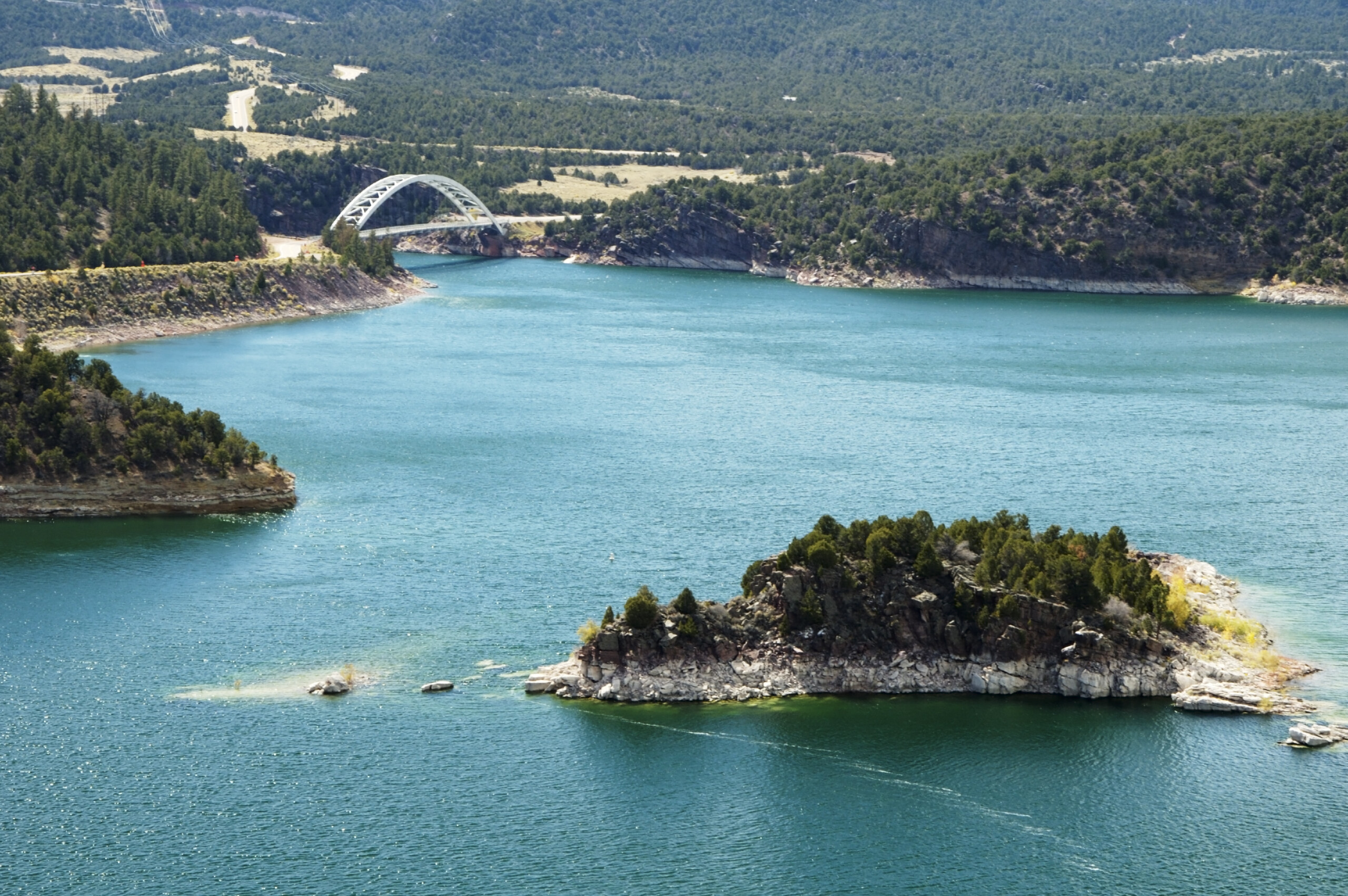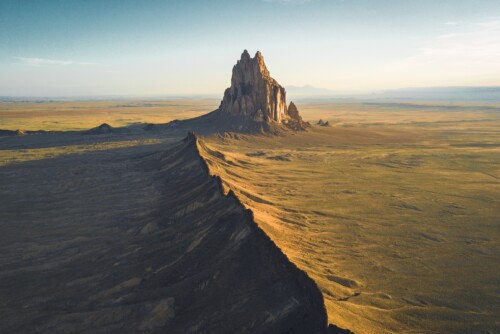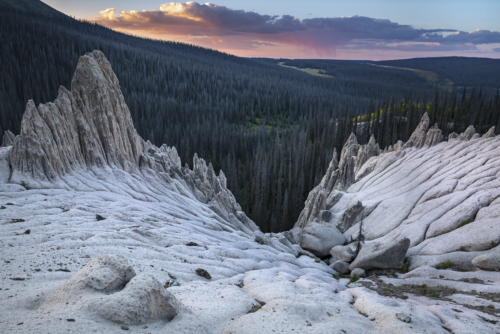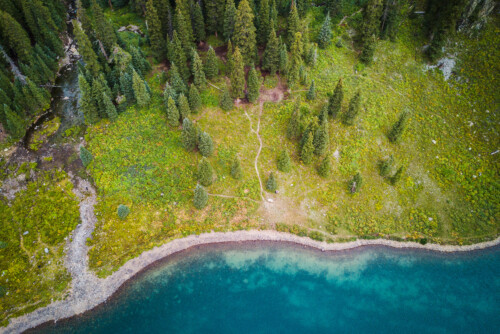Annual Report 2022
Whether you are rafting a roaring river, fly-fishing on a crystal-clear lake, or turning on the kitchen tap, water connects all of us in the West. Climate change, decades-long drought, and population growth strain our water supplies and threaten our very way of life.
The best way to keep water in rivers is to use less, yet there has been little connection between water and land-use planning in the West as our communities have grown. For years, water managers have struggled to find new sources of water to meet growing demands, often at a huge cost to people and the environment. The region’s arid landscapes have become overwhelmed by bright-green turf grass as precious drops of runoff are lost in storm drains.
Through our research, WRA is creating a blueprint for sustainable water management, and more communities are fundamentally rethinking how they manage water.

Our efforts helped drive historic investments in water conservation in 2022. We received a grant to expand the Growing Water Smart program to Utah. Through a series of collaborative workshops and technical support, the program provides municipalities with the evidence-based building blocks they need to realize their water efficiency, smart growth, watershed health, and resiliency goals. The program incorporates WRA’s research and was first launched in Colorado by the Sonoran Institute and the Babbitt Center for Land and Water Policy. Colorado municipalities have been quick to apply what they learned — less than a year after attending the workshop, the city and county of Broomfield partnered with WRA and WaterNow Alliance to develop a new waterwise landscaping ordinance.
Other Western communities need these same policy frameworks, and fast. We partnered with the Utah Division of Water Resources, the Babbitt Center, and the Center for Water-Efficient Landscaping at Utah State University to bring the Growing Water Smart program to Utah. After years of building statewide support, generating local interest, and enduring setbacks from the pandemic, WRA launched the first workshops in Utah in the fall of 2022. Participating communities created comprehensive 12-month action plans that laid the foundation for integrating water and land-use planning. Plans include developing waterwise landscaping ordinances, incorporating water conservation and efficiency into general plans, and revising fees to incentivize water conservation. To date, one-third of Utahns live in a community that has participated in Growing Water Smart. Our goal is for every municipality and county to participate in Growing Water Smart and implement programs to sustainably manage water.
Meanwhile, WRA’s advocacy at the Utah State Capitol helped advance three forward-thinking water conservation bills in 2022. Senate Bill 110 requires local governments to consider water supplies and water efficiency measures when preparing long-term plans for future development, something that had been previously overlooked in Utah.

WRA also laid the foundation for legislation to conserve outdoor water consumption. In Utah, 70% of municipal water is used outdoors. The state has some of the highest per-person water use in the U.S., partly because of the prevalence of unmetered secondary water systems, which supply untreated irrigation water for outdoor use. Users pay a flat fee regardless of how much water they consume, and were not tracking their water usage. WRA conducted research to find a solution. We spoke with water managers and convened practitioners in secondary water metering, finance, and communication. We found that simply installing a meter to help people monitor their water use can reduce consumption by approximately one-third. WRA advocated for House Bill 242, which puts this research into practice. This law requires most water suppliers in Utah to meter these secondary water connections and provides grants to help fund these services.
WRA also helped advance two of the first statewide turf-replacement programs in our region.
Colorado passed House Bill 1151, which created a two-year, $2 million fund to support local turf-replacement projects and directed the state to create a fund for Coloradans who do not have access to local programs. WRA was involved every step of the way — from conducting studies and piloting a municipal program with select communities to writing the bill language and finding legislators to sponsor it — and ensured it was signed into law. The legislation opened the door for communities to expand their turf replacement efforts. WRA built on this momentum by partnering with WaterNow Alliance to develop a guide to help communities finance large-scale turf replacement.
In Utah, House Bill 121 provided $5 million in incentives for people to replace their lawns with drought-tolerant landscaping. The program was so successful that the legislature has now committed another $3 million annually. This law also ensures that the state government walks the talk when it comes to water conservation by limiting how much turf grass may be on the grounds of new state facilities and setting goals for state agencies to reduce their water use by 25% by 2026.

Colorado also became one of the first states to adopt rules for direct potable reuse. Direct potable reuse regulations allow wastewater to be purified and safely recycled for drinking water and other uses. By leveraging advanced water-purification technologies, we can relieve the pressure on local water supplies. Over the last seven years, WRA has been assembling the tools to implement this cutting-edge solution in Colorado. We secured more than $525,000 in funding, engaged a panel of experts to develop guidelines, and managed an inclusive stakeholder engagement process that developed the policies that were ultimately adopted in Colorado. The new rule was approved unanimously in 2022, opening the door to a new sustainable water supply.
For nearly a century, the West’s rivers and water supply have suffered under the weight of drought, climate change, and population growth, but the tide is turning. WRA’s expertise has shaped programs and legislation to increase water security, build resilience to the climate crisis, and protect rivers. Our work is far from complete, and we will be closely monitoring the implementation of programs and legislation passed in 2022 as we build on our progress in the years ahead.









